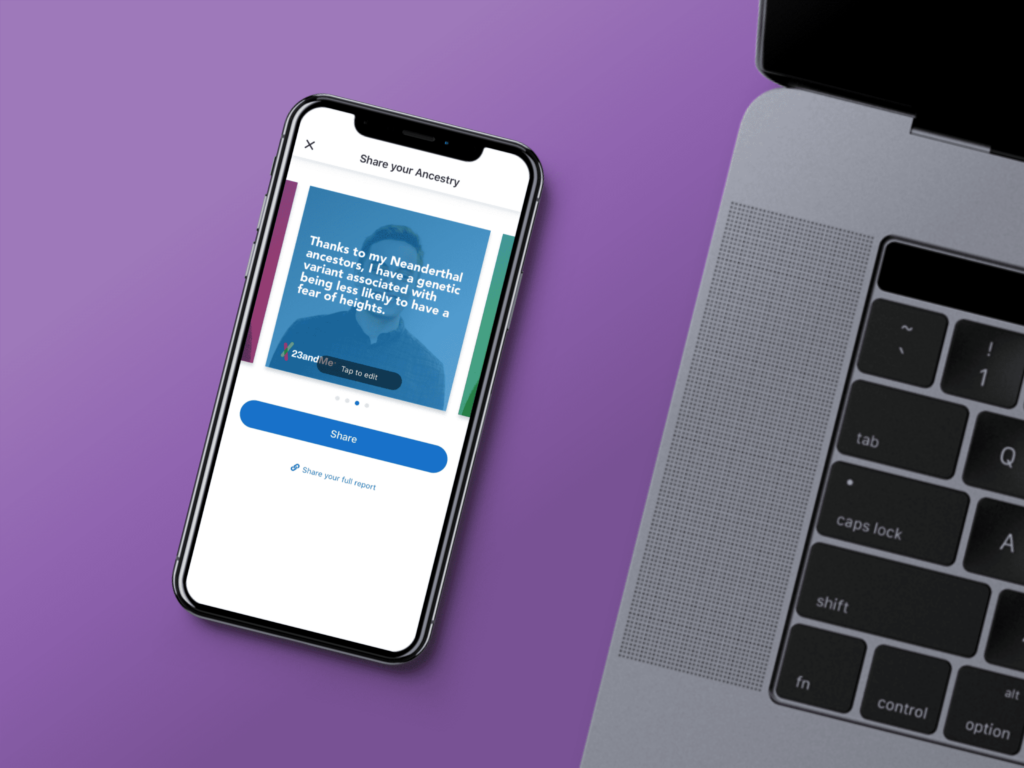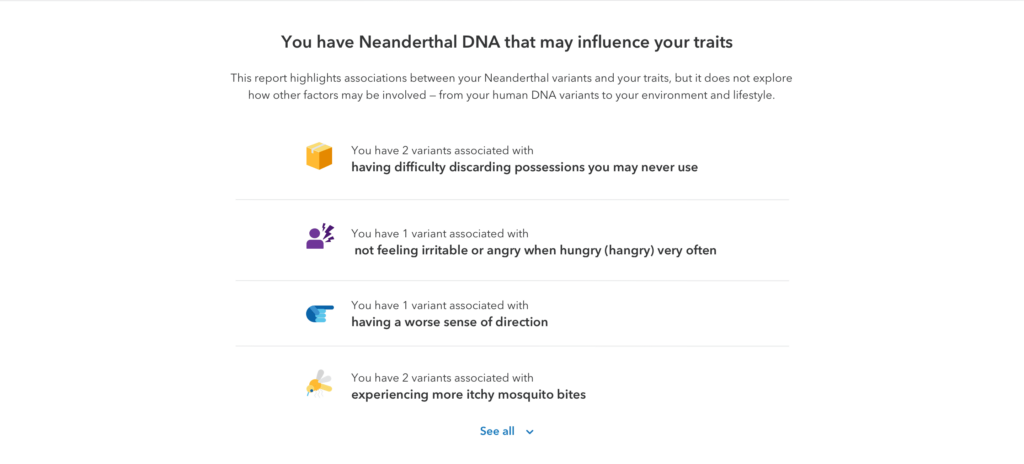Since 23andMe’s Neanderthal Ancestry report was first released eight years ago, new scientific discoveries have enabled 23andMe to identify previously unknown associations between Neanderthal DNA variants and certain traits.
While most people have a relatively tiny percentage of Neanderthal DNA, our ancient cousins are a big part of the human story. Now we’re celebrating that ancient DNA in a big way with the release of an even more detailed Neanderthal Ancestry report.

A Brief History of the Neanderthal Ancestry Report
Since the Neanderthal genome was sequenced for the first time in 2010, scientists have learned a lot more about how these ancient hominins lived, and how their DNA may affect us today. These studies have even given us insight into human migration out of Africa. Most recently we learned that modern humans may have left the continent 200,000 years ago, much earlier than we thought. Since 23andMe first started offering Neanderthal ancestry insights in 2011, many new discoveries have been made that we’d like to highlight.
But this series of recent scientific discoveries aren’t the only driving force behind this update — we also listened to all the customer feedback and questions we’ve received over the years. We appreciate all of the Neanderthal nerds who asked for more features, suggested new stories, and shared their own experiences.

What’s New in this Update
All the Neanderthal report features our customers know and love — their Neanderthal Ancestry percentile, Connections leaderboard, and ancient history stories — are still included in the report. Now, customers will also see more than double the number of Neanderthal trait associations, including brand new trait associations, some of which are exclusive to customers on a v5 chip. We’ve also added three new social share cards for your Neanderthal results as part of the ultimate ancient DNA conversation starter pack.
In addition to giving the Neanderthal report a whole new look and feel, we’ve simplified customers’ results for clarity and added new stories to help bring humans’ ancient Neanderthal ancestors to life.
The Science Behind the Report
Research suggests that 1-2 percent of the genomes of all modern humans with European, Asian, or Native American ancestry are of Neanderthal origin. (A recent study suggests that people of African ancestry also have a very small amount of Neanderthal DNA, a surprising finding that suggests modern humans migrated out of Africa much earlier than we thought, intermixed with Neanderthals, and then some migrated back to the continent.) Scientists at 23andMe further noticed that several Neanderthal DNA variants are associated with traits in 23andMe customers. To do this, scientists combined and analyzed data from 23andMe’s database of genotyped customers who have consented to participate in research through web-based surveys. The team was then able to identify associations between Neanderthal DNA variants and human traits like the likelihood of sneezing after eating dark chocolate, sense of direction, mosquito bite frequency, body type, dandruff, or being naturally strong, among others.
Many of these new Neanderthal trait associations were identified from DNA variants that are only found on 23andMe’s v5 chip. A customer will need to upgrade their chip if they’re on a previous version in order to see all of the new possible Neanderthal trait associations.
“So much about Neanderthals have been discovered over the last decade, and we’re really starting to understand that they were probably a lot like us,” said Samantha Ancona Esselmann, Ph.D., the 23andMe product scientist behind the new report. “23andMe has a unique opportunity to highlight some of those exciting new discoveries to help bring our Neanderthal ancestors to life.”
What’s changing for existing customers?
If you are on the most recent version of the 23andMe genotyping chip (called “v5”), you can expect your Neanderthal DNA variant count and percentile to change with the most recent update. That’s because we improved the way we count your Neanderthal variants. Now, our analysis does a better job identifying Neanderthal ancestry in non-European populations and provides you with a more representative estimate of your Neanderthal ancestry compared to people from around the world.
Customers on earlier versions of the genotyping chip should see no change in their number of Neanderthal DNA variants, but they may see a small percentile change reflecting the most up-to-date analysis.
Not a 23andMe customer yet? Buy a kit to start learning all about your own Neanderthal DNA and more. If you’re already a customer, you can share your updated Neanderthal results and fun facts with share cards to post on your favorite social media channels.

